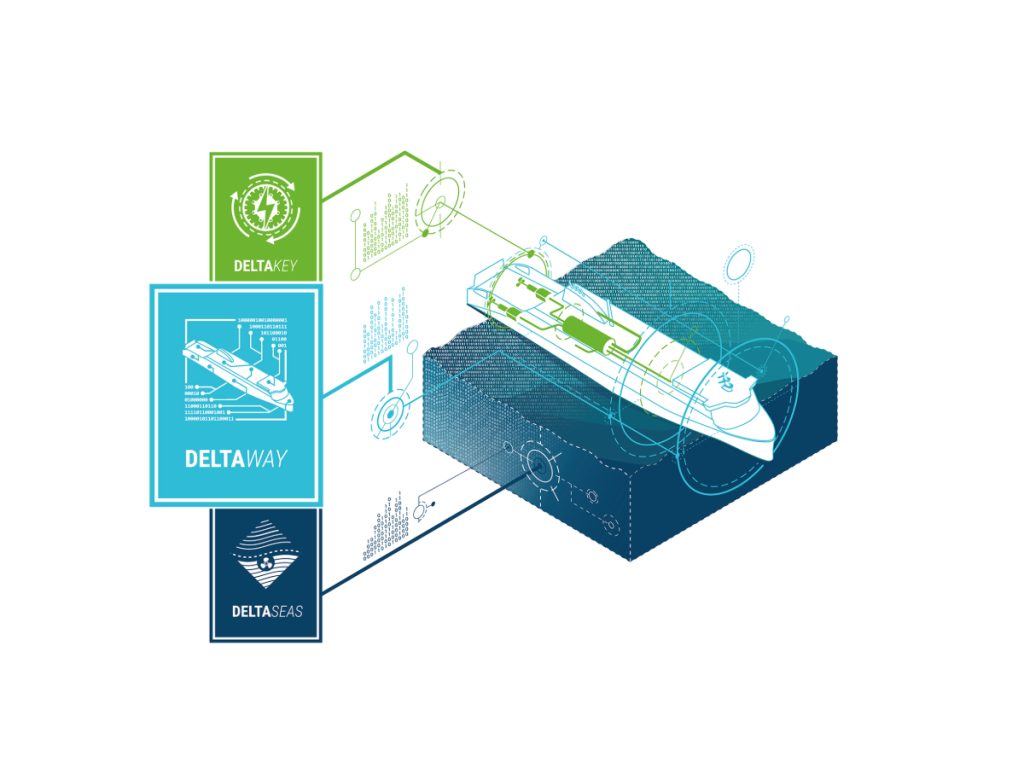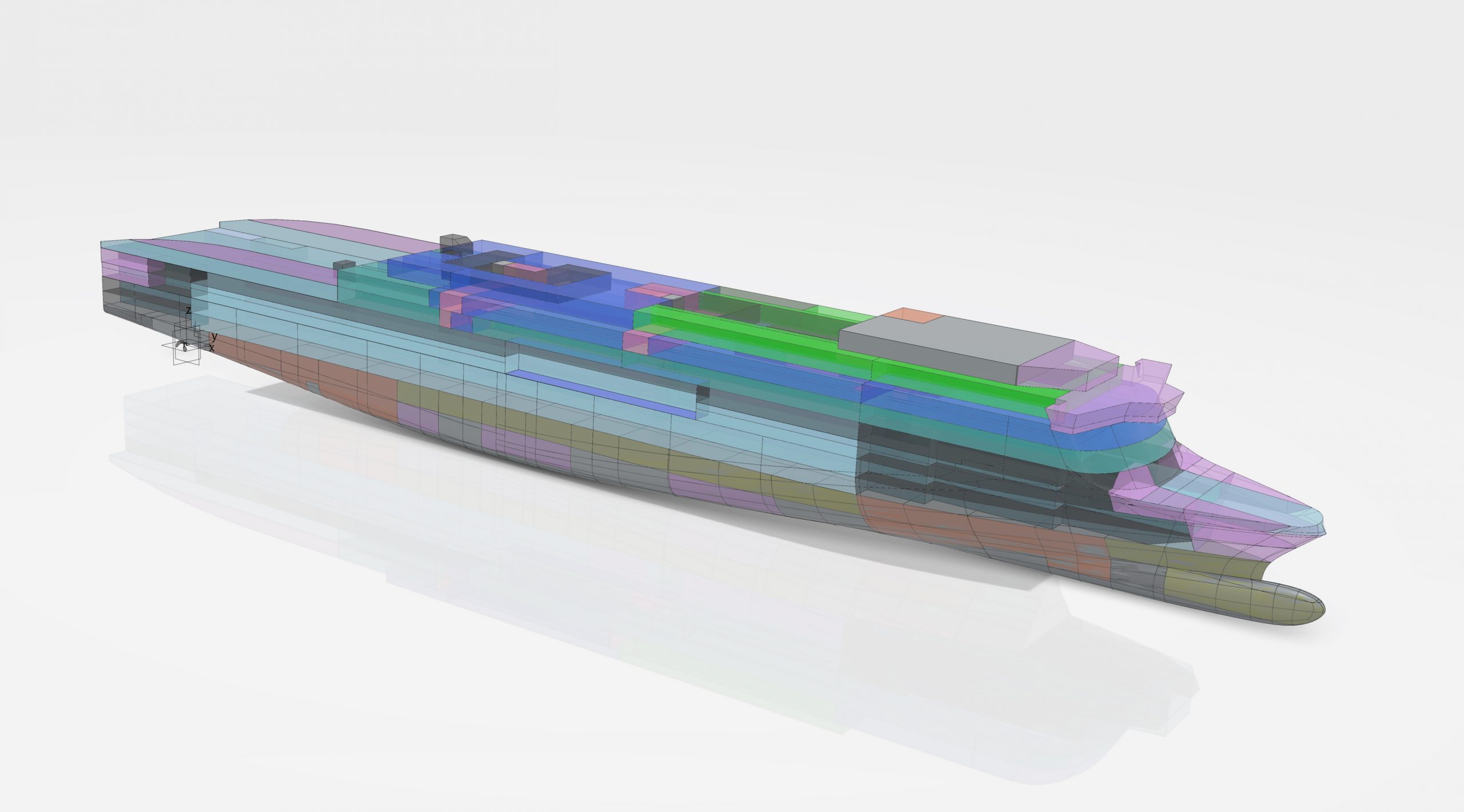DeltaWay – Introducing AI to ship concept development

Our previous blog texts introduced digital design tools designed for estimating a vessel’s lifetime, propulsion power and the energy and environmental footprint. This blog opens up the part of the digital design that is closest to the physical representation of the ship, and explains how it combines it all together. We call this part of the digital toolbox DeltaWay.
The main focus of DeltaWay is on the construction, stability, arrangements and preliminary energy usage of the vessel. The DeltaWay model is completely opposite to utilising the existing layout or general arrangement of a ship as the starting point for designing a new one. Instead, DeltaWay always involves the unique development of a new vessel, so also gives the best possibility to start developing a future-proof vessel based on an owner’s special needs.
The first round
At the beginning, we define the ship’s main dimensions like length, beam, draught and displacement, using artificial intelligence (AI). Once the main dimensions are defined, a tailor-made hull form for the vessel is created using our hydro team’s development tools. The tailor-made hull form is the basis for a speed/power estimation. The most suitable engine configuration (either mechanical or electric) can then be selected and the propulsion arrangement configured. Engine configuration is fitted into the hull form, and the engine room location and compartment layout’s development will be based on that. This gives a good basis for the vessel’s development. A report of the arrangement model gives areas, volumes and the centre of gravity for each space in the vessel and very accurate weight information on technical, interior and outfitting areas.

Designed for a purpose
Energy development using DeltaKey tools can already start after the first round of design. DeltaSeas development also starts at this point, since the tailor-made hull form for the vessel has already been developed. The results of these analyses may create a natural feedback loop about the ship machinery arrangement and a hull form re-design aiming for the improved performance of the ship.
The arrangement of the vessel flows such as cargo, passenger and proviant development begin by using the 3D environment together with library templates that allow quick verification and modification of the layout. Understanding these main flows and being able to include their impact in the vessel’s physical dimensions and energy consumption are important starting points for a ship that is designed for an actual purpose.
Avoiding the need for costly re-design at a later stage
Having a genuine digital prototype of the ship available from the start of design has several important benefits considering that normally there are very few details about the design available before the outline design stage of the ship. This section lists some of these aspects.
For instance, stability calculations start based on the developed DeltaWay layout, and the first verification of rules are available very early in the project. At this stage, the preliminary EEDI calculation and reporting can also be performed since all the needed parameters are known.
A 3D structural layout is effectively created on top of the ship’s general arrangement model in this early concept phase. The early 3D approach to the structural concept allows a solid basis for accurate weight calculations and space utilisation together with the possibility to use the created model for early phase structural response assessments utilising a finite element method.
Combining comprehensive experience of structural concept design and utilising new 3D methods in the early phase of the project allow the remarkably effective use of steel, taking into account the strength and vibration behaviour of the vessel. Understanding the efficient arrangement of the primary steel layout at the ship’s arrangement level allows the lowest possible steel weight. This enables a high deadweight figure together with reduced building costs for the ship’s hull.
DeltaWay and the digital design
Deltamarin’s digital design “toolbox” of DeltaKey, DeltaSeas and DeltaWay includes a set of practical design tools and methods for producing a highly flexible digital representation of a ship. The aim of the representation is to optimise the performance of the ship under future operating conditions, regardless of whether there are various alternative scenarios describing the future. The weight and even the technical order in which the first simulations are performed vary, depending on the type of ship we are designing and the data available.
This flexible development platform includes the relevant technical information that is required for the ship’s initial pricing for shipyards, and later for building the ship. After building, the digital ship sets the baseline for the expected level of operational efficiency and sustainability and is therefore a valuable benchmark to be used as reference during the entire ship life cycle. Thus, the involvement of a ship designer throughout the entire lifetime of a ship is not only a possibility, but also a necessity in the design of future-proof ships.
Want to read more? See also our other published blogs.
For more information, please contact



